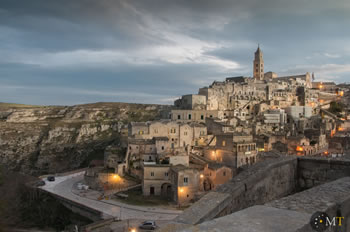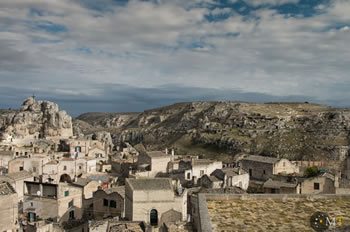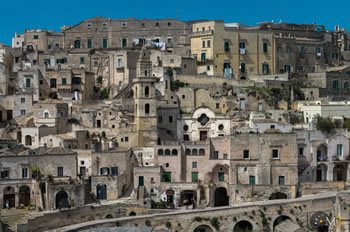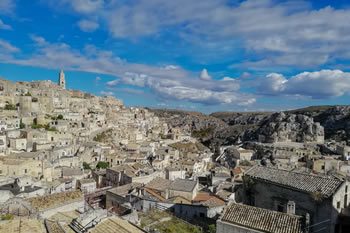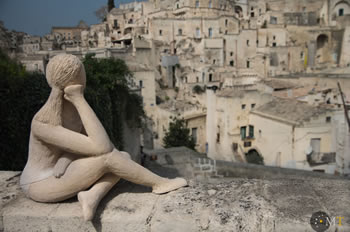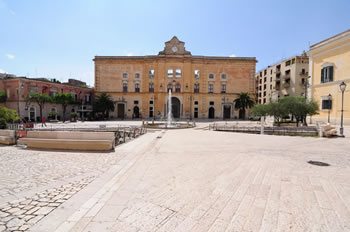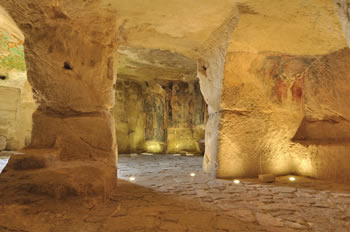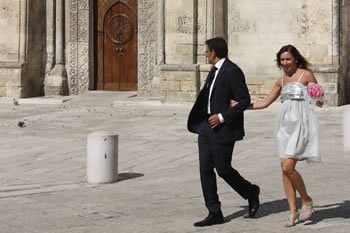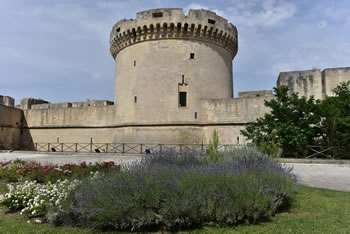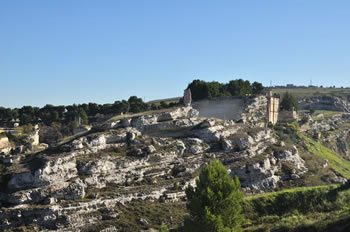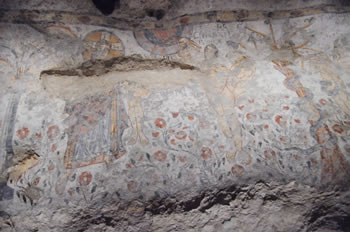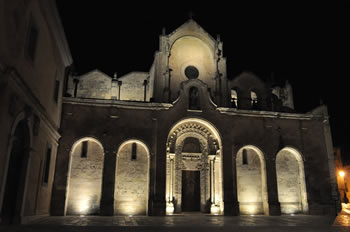Matera is the city known worldwide for the Sassi, its ancient quarters. Matera is located in Basilicata on the Murge plateau on the border with Puglia. A deep canyon called the Gravina separates the old town from the Murgian territory.
Facing the two Sassi is a unique rocky landscape, now falling within the Murgia Materana Park, the treasure chest that holds the city’s little-known secrets and origins. Matera and its surrounding area have an ancient history and preserve evidence of human presence since the Paleolithic period, a presence that continues for millennia to the present day.
The Sassi of Matera were declared a UNESCO World Heritage Site in 1993. In 2014 Matera was designated as European Capital of Culture 2019.
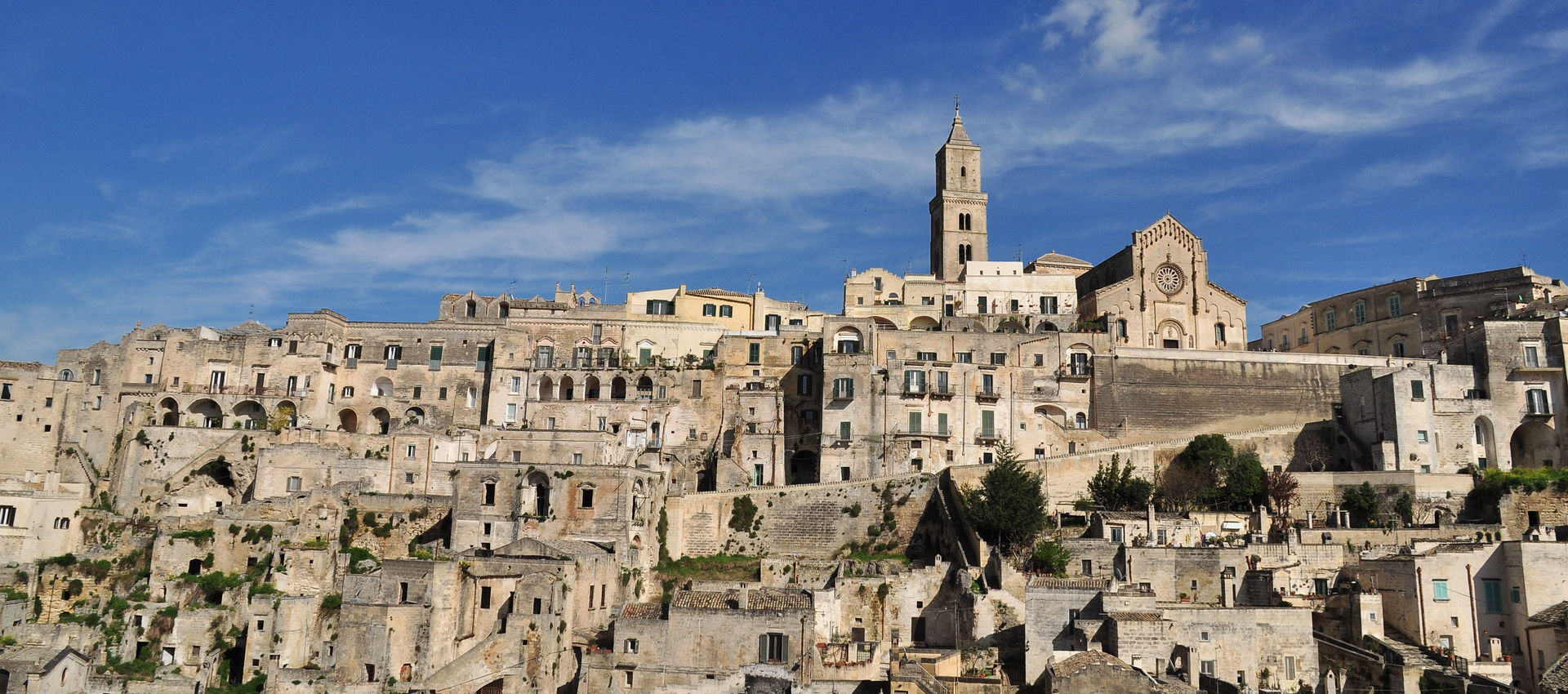
Matera City of the Sassi
The Sassi of Matera
The Sassi di Matera are the two ancient districts of the city located on either side of the Civita.Their development follows the course of the great Canyon that skirts Matera along a north-south axis.
The city to the east is bounded by the great valley of the ravine while to the west the Sassi border, intertwine and merge with the plain, the historic center of Matera.
Rising along a different axis between the seventeenth and eighteenth centuries, the historic center in turn separates the old town from the new one born after the Sassi were abandoned in the 1950s.
Until 1950 the Sassi were the most populated place in the city, especially by the less affluent, while the historic center and the Civita were inhabited by the clergy, the landed bourgeoisie, and what remained of the city’s nobility.
The two Sassi developed from a rocky context within two small valleys separated by a rocky promontory, the Civita, the original core of the medieval city.
The Sassi are a seemingly chaotic collection of caves, houses, streets and neighborhoods, partly built and partly carved directly into the rock. Within them, seamlessly there are ancient caves, rupestrian churches, cave-houses and noble palaces, all immersed in a rocky setting that enchants those who live there or those who spend just a few hours there.
The Sasso Caveoso is located in the southern part and is the less built-up of the two. Visiting it it is possible to get an idea of what might have been the original condition of the places.
The north-facing Sasso Barisano is a collection of houses, streets and courtyards that develops at the foot of the Civita, close to its walls that partly include it.
The charm of the cave town
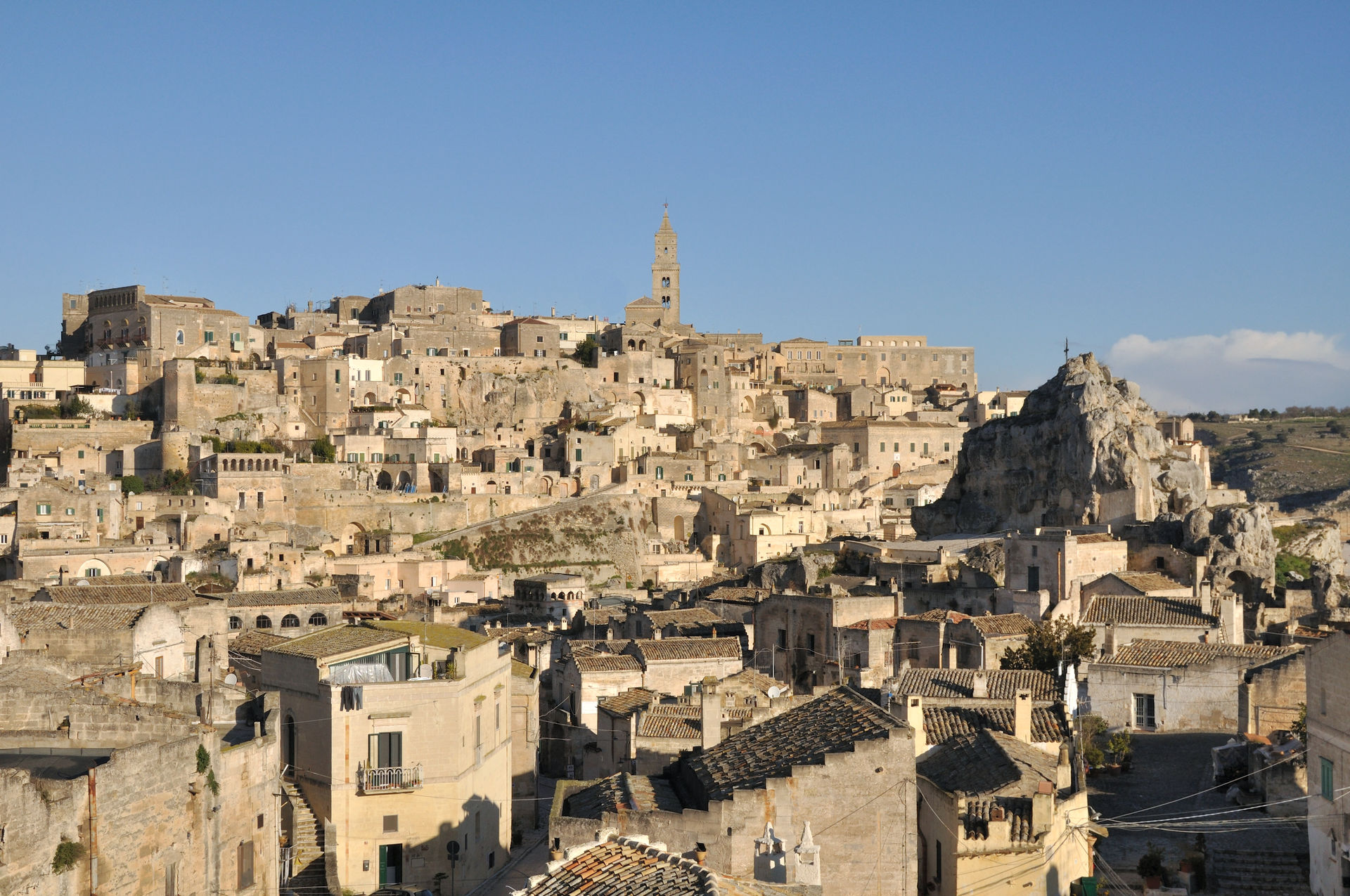 The Sassi of Matera as a whole are a place that produces special sensations in those who live and observe them; they are an urban environment that forms a cultural landscape entirely immersed in the rocky setting of the Murgia.
The Sassi of Matera as a whole are a place that produces special sensations in those who live and observe them; they are an urban environment that forms a cultural landscape entirely immersed in the rocky setting of the Murgia.Many filmmakers have been struck by the light and colors that the Sassi reverberate. Pasolini saw Matera as a timeless place and wanted to shoot one of his most important films there, The Gospel According to Matthew.
After him many other directors, more or less important, followed his example.
Many important urbanists also worked there together with sculptors, painters and poets; some stayed there for long periods drawing inspiration from it. All of them, through the relationships they weaved with the city’s cultural fabric, contributed in the following decades to the socio-economic redemption of the city and to making Matera a cultural reference point for all of southern Italy.
Matera, the Sassi and the neighborhoods built after depopulation are now the site of important cultural initiatives, the object of urban regeneration and a laboratory for experimentation and construction of a new cultural model for all of southern Italy.

 Home
Home
